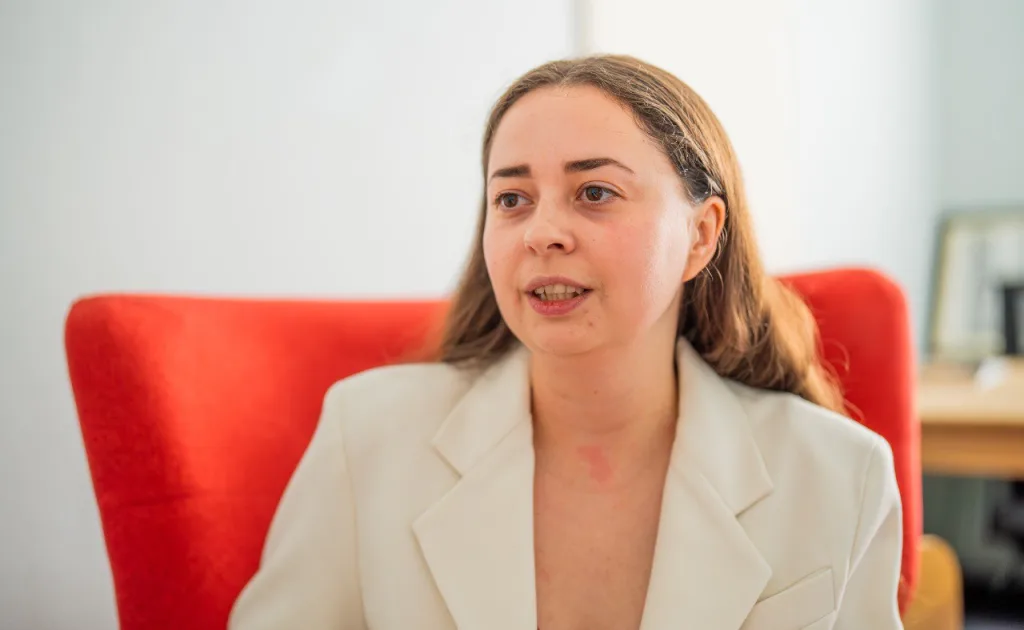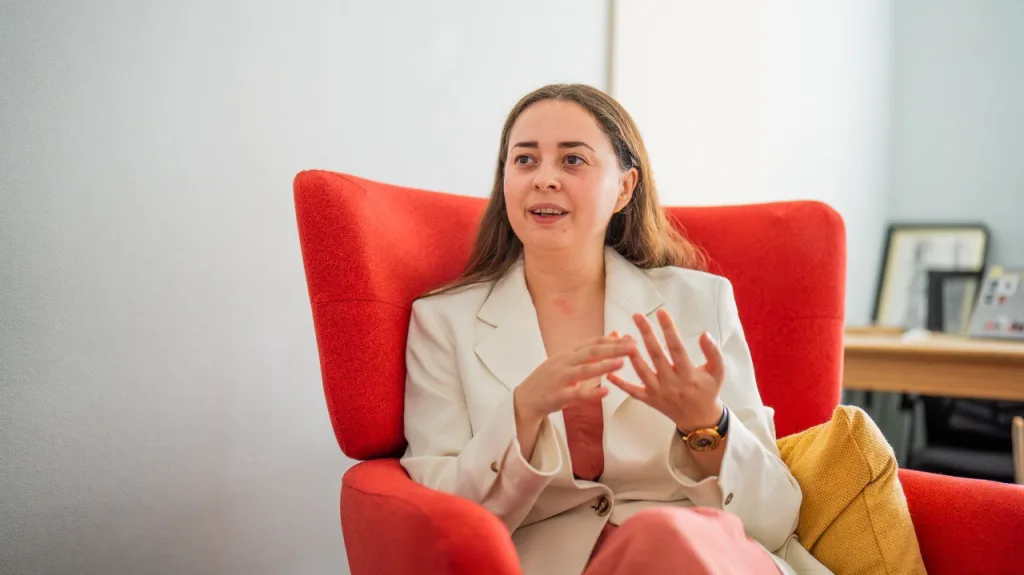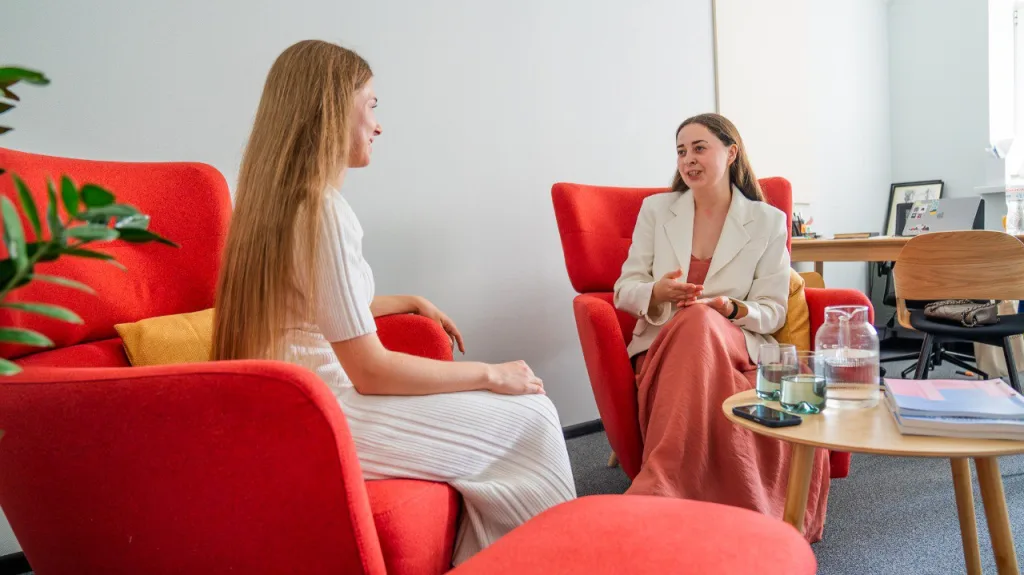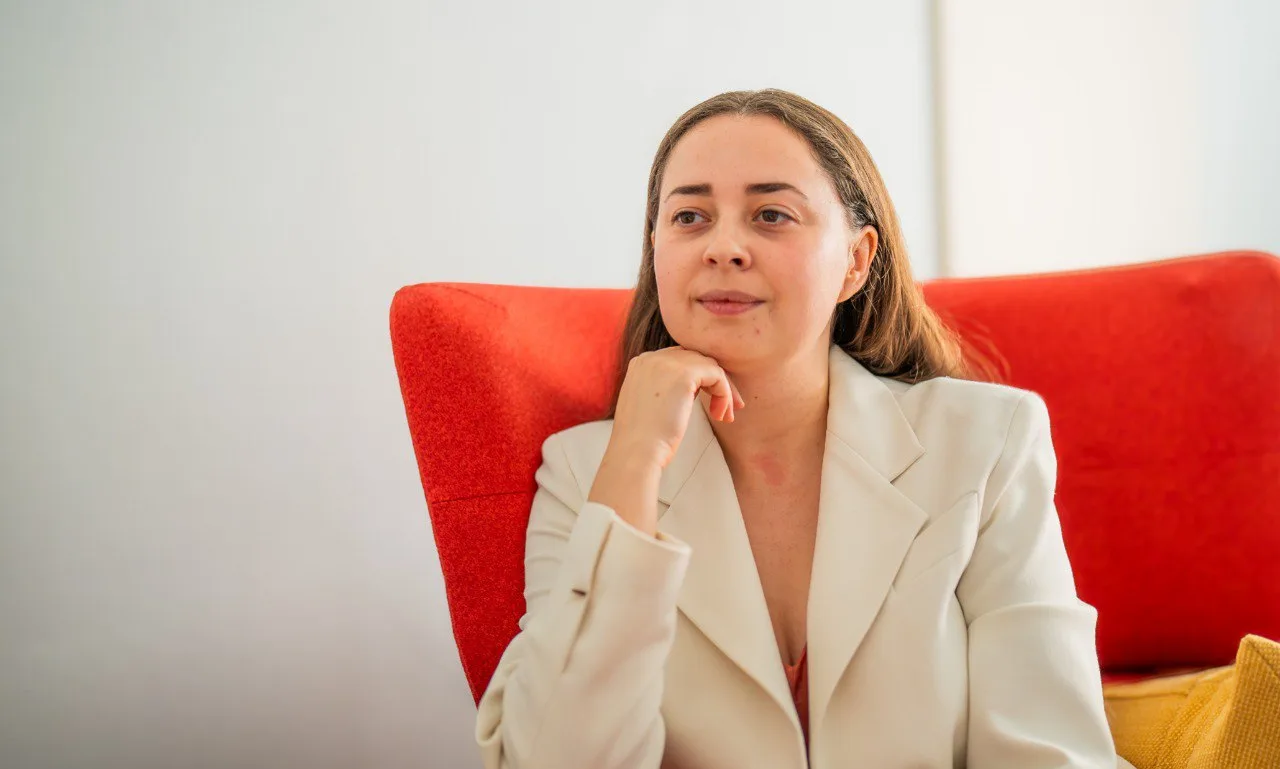What should be done with urban development inherited from the Soviet Union? How can it be adapted to the needs of modern people? Victoria Titova discussed the challenges in contemporary urbanism and how her team at the urban bureau Big City Lab is overcoming them.
The Path to Urban Transformation
– What was your professional journey to “Big City Lab”?
– Once, while working in business consulting, I felt that I wanted to do something more meaningful. Consulting offers many interesting opportunities: new projects, clients, industries. But the essence of this work is to help someone who already has a lot of money make even more. Instead, I was inspired by the idea of creating something that would have a positive impact on people’s lives. I decided to move into the social sphere. Six years ago, I found my place at Big City Lab and finally felt at peace.

Read also: Inna Ivanenko: “Patients of Ukrainian hospitals should not have to pay out of their own pockets”
Creating a New Standard: Urban Park
– Which projects are you most proud of?
– One of my favorite (and most challenging) projects is the creation of Urban Park at VDNH in Kyiv. By the way, this park recently turned three years old. Now it is visited by more than a million people every year. This is a very high figure, and it remains so even despite the war.
I like this project because, firstly, it has set a new standard in sports infrastructure. Secondly, for Kyiv, it has become not only a sports center but also a cultural one. Thematic festivals are held there. This year, it hosted the Olympic fan zone. Ukrainian musicians filmed music videos there. And even one couple came there to take wedding photos on their wedding day!
From the idea to the realization of Urban Park, it took only six months. When you do a project so quickly, it is very easy to make mistakes. But at the beginning of the work, we allocated several weeks to survey more than 50 leaders of sports and street cultures in Kyiv. And thanks to this, we understood what exactly this space should be like. We also surveyed more than two and a half thousand visitors to VDNH.
I am so happy every time I come there and see little kids in helmets, on roller skates, skating in this skate park. It’s an incredible feeling!
War and New Challenges
– When was the urban bureau founded?
– Big City Lab was founded in 2018, so we are already six years old this year. We have survived the coronavirus pandemic, the full-scale invasion, and now our team is the largest it has ever been. We are now 17 people.
– Has the full-scale war changed the direction of your activities?
– It became a turning point for us. Before it, we were engaged in projects aimed at improving the quality of life. These were urban parks, cultural projects, city development strategies, reserves, or national parks, cultural objects. All of this is not relevant now.
At the beginning of 2022, we had grand plans – Kyiv, Khortytsia, Mariupol… But after February 24, everything we love and know how to do suddenly became irrelevant. We had to think about what we could do now. It was a difficult period that required significant effort from us.
Today, we are focusing on creating cities that are accessible to everyone. We are working to ensure that people with disabilities can live and work fully.

Read also: Niya Nikel: Women “Rule” This World and Make It Better
The Future of Education: School Transformation
– Tell us about the school transformation project you are currently working on.
– Most schools, kindergartens, and vocational schools were built during the Soviet period. They have their advantages and disadvantages. Soviet architecture existed during the industrial economy. Now we live in a post-industrial economy. Previously, people moved to the city to find work. Now, in addition to work, people move for better education and urban lifestyle. Our lifestyle has completely changed, for example, compared to the 1980s. And most of the public buildings we continue to operate in have remained the same.
For example, a modern child does not fit in a classroom where everyone sits and looks at the back of each other’s heads. A classroom format is needed that creates social connections between student-student and student-teacher.
However, where can these social connections be created if the school only has classrooms and corridors? The assembly hall opens a few times a year. The library in 90% of cases is a book storage where it is impossible to spend time. The cafeteria is only accessible during lunch, and the gym only during physical education classes.
These everyday limitations greatly affect personality development. So what does a child need? When we, as adults, go to work in an office, in addition to the workplace, we have at least some sofa where we can rest. There are meeting rooms. And the workplace itself provides for individual space. Children and teachers in schools have the same needs.
I have researched the factors that affect teachers’ comfort during work. First of all, it is the quality of lighting. Then the air temperature and its quality. In which school have you seen ventilation? I think in none. The fourth point is acoustics. How much does a teacher need to raise their voice to be heard?
At the initial stage of our project, we conducted focus groups with children, principals, and teachers. Then we collected all the information from scratch. Based on it, we developed technical tasks for architects.
What is important for working in urbanism
– What personal qualities, in your opinion, would be useful for working in your field?
– The ability to accept rejections and maintain motivation even in difficult situations. We work in a specific format. First, we come up with an idea. Then we look for windows of opportunity for it. We planned the school project for a year before implementation. You need to have good endurance not to burn out on the idea. Our team consists of people who understand that results take time.
It is also important to remember why you are doing it. I was once given advice that I follow in life. That any project at some point can turn into an absolute nightmare. Everything goes wrong: deadlines are burning, someone got sick, funding was delayed, it is unclear what to do, someone in the government changed… And the only thing that saves you at this moment is a sincere love for the project.

Read also: Maria Pavlichuk: At JuniorS, we are fighting for the space for childhood
Funding and Future Plans
– Do you disclose budgets?
– In different projects, it varies, depending on our agreements with donors. Regarding schools, I can disclose construction budgets. Renovating a school costs $600-800 per square meter. Building a new one is about $1500-1800 per square meter. School reconstruction allows saving up to 30% of funds compared to building new ones while providing modern learning conditions. Thanks to this approach, the square meter of our reconstruction costs about a thousand dollars.
Our sources of funding are completely different. However, after the full-scale invasion, we do not work with any state or municipal funds. We seek funds from private businesses or international donors.
– What are your plans for the future?
– Our task is to expand our expertise as much as possible, develop the team, and work out solutions in different sectors. We understand that at some point all this will be needed in very large quantities. We are trying to find solutions to the problems that exist now. For example, the issue of accessibility – how to adapt a rehabilitation center to the needs of people with disabilities. I know, it sounds strange. But most of these centers were built a long time ago and are completely inaccessible.
What to Read
– What books would you recommend reading?
– I would recommend the book “Soft City.” The author is a Danish architect. He explains that to improve the quality of life in cities, it is not necessary to undertake grandiose projects. If you have ever wondered why your city is comfortable or uncomfortable, why you feel better somewhere and worse elsewhere, flip through this book.
As for worldview books, one of my favorites is “The Magic Mountain” by Thomas Mann. Another book worth reading is “Understanding Russia: Eyewitness Accounts.”
This is a collection of notes in diaries, letters, or publications by various foreigners who visited Russia at different times. In it, you can read the notes of an Austrian ambassador from the 15th century and understand that nothing has changed in Russia since then.
Read also: Ukraine is on the verge of a climate crisis: heat, droughts, floods and threats to ecosystems



